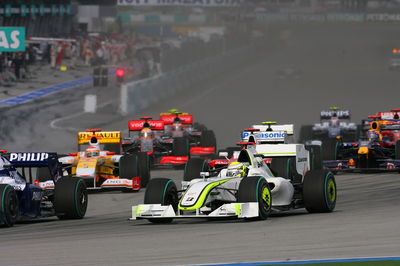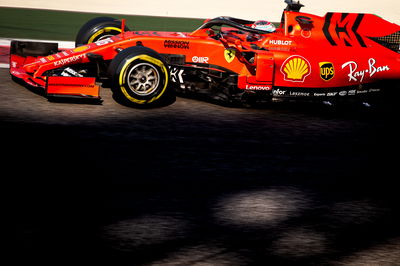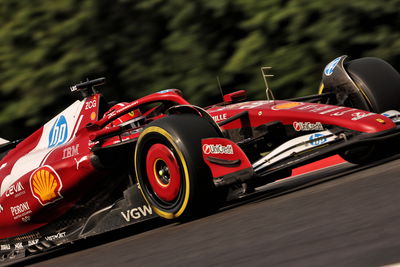Pat Symonds: Lessons can be taken from 2009 reg changes for 2021
Formula 1 technical consultant Pat Symonds believes the championship can learn from mistakes made in the 2009 regulation changes in a bid to avoid any potential loopholes for 2021.
A number of teams found loopholes to gain performance advantages following the 2009 rules overhaul, and F1 is keen to avoid a repeat when a raft of new sporting, technical and financial regulations come into force from 2021.

Formula 1 technical consultant Pat Symonds believes the championship can learn from mistakes made in the 2009 regulation changes in a bid to avoid any potential loopholes for 2021.
A number of teams found loopholes to gain performance advantages following the 2009 rules overhaul, and F1 is keen to avoid a repeat when a raft of new sporting, technical and financial regulations come into force from 2021.
Speaking at Autosport International, Symonds, who is part of a team of technical experts working under F1 sporting chief Ross Brawn to help devise the final set of rules to produce better quality racing, insists there are lessons to be learned from the past.
“Myself, Rory Byrne, Paddy Lowe and the late Charlie Whiting, we formed the overtaking working group where we looked at producing the regulations from 2009,” Symonds explained.
“Now, the effort that went into that was a minute fraction of what we’ve done for 2021. At the same time, I was also trying to win races and win championships.
“It’s quite interesting that I think we did leave loopholes in there. The obvious one that many people know about is the double diffuser, but there were a lot more subtleties than in this whole business we talk about now of outwashing, vortices, things like that, they weren’t really on our radar because we knew what we wanted to do.
“The great thing now, and I learned so much from doing it at that time, you do learn from your mistakes.
“We published the regulations on October 31 of last year, and now, although we’re still working on a few other bits of some of the prescribed components, we’re just finishing off the design of those which we have to release by January 31.
“The rest of the time, the whole of the aero group is looking for those loopholes. We have our car to the regulations, and now we’re just trying to add performance to it, in exactly the same way as if we were a racing team.
“Along the way, we find out what’s good and what’s bad for the wake of the car, which is our ultimate aim, to have a benign wake behind the car. 2009 was a good experience for us.”
And Symonds believes it is “absolutely fundamental” that F1 has an independent group working on the new regulations to ensure the final outcome has the best interests of the sport at heart.
“We’ve set a new precedent, it’s never been done before,” he said. “But at the same time, we did engage with the teams.
:”So all the way along, we were giving regular updates to the teams through a series of aero working groups, and more importantly, what we were doing is issuing the CAD models, our 2021 car, at regular intervals.
“We were asking the teams to investigate them, to look at specific things. Each of the 10 teams did an awful lot of work on it. We were engaged all the way along.
“I think it’s absolutely fundamental that we had this independent group, because if you work in a team, you’re paid to win races, you’re paid to exploit performance, you’re paid to find those loopholes in the rules and everything.
“So, it’s really unfair to expect the teams to look above that and look at what’s good for the sport. Whereas we, as we all work for the commercial rights holder, we absolutely are focused on what’s good for the sport.”












